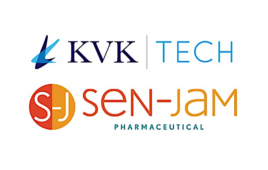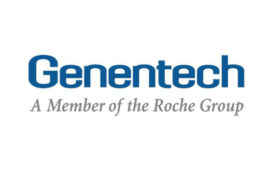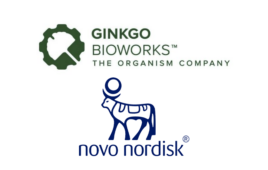
(Credit: Janssen Pharmaceutical Companies)
The Janssen Pharmaceutical Companies of Johnson & Johnson is unveiling new 96-week data for Symtuza (darunavir 200 mg, cobicistat 150 mg, emtricitabine 200mg, and tenofovir alafenamide 10 mg; D/C/F/TAF), a single-tablet regimen for the treatment of human immunodeficiency virus type 1 (HIV-1) in treatment-naïve and certain virologically suppressed adults, in a presentation at IDWeek 2018 in San Francisco.
According to the company, results from the pivotal Phase 3 EMERALD study demonstrate that in adults with HIV-1 who are virologically suppressed, switching to Symtuza resulted in maintained high virologic suppression (91%, 692/763) and low virologic failure (1%, 9/763) at week 96 (per FDA-Snapshot); low cumulative virologic rebound (3.1%, 24/763); and no resistance development, up to 96-weeks.1
“The 96-week results from the EMERALD study demonstrate that Symtuza can offer clinically appropriate people living with HIV a single-tablet option that may help them maintain high rates of virologic suppression over time,” said Joseph Eron, M.D., professor of medicine and director, clinical core, University of North Carolina Center for AIDS Research, Chapel Hill, NC.
This 96-week extension study, which follows on from the earlier 24- and 48-week results,2,3,4 reinforced the long-term efficacy, resistance and safety profile of Symtuza as a treatment for virologically suppressed adults with HIV-1.
On September 25, 2017, the drug was approved for the treatment of HIV-1 infection by the European Commission based on results from a bioequivalence study that compared Symtuza with the combined administration of the separate agents darunavir [D] 800mg, cobicistat [C] 150mg, and emtricitabine/tenofovir alafenamide [FTC/TAF] 200mg/10mg fixed-dose combination.5,6
____________________________________________________________________________
References
1. Eron JJ et al., Week 96 efficacy and safety results of the phase 3, randomized EMERALD trial to evaluate switching from boosted-protease inhibitors plus emtricitabine/tenofovir disoproxil fumarate regimens to the once daily, single-tablet regimen of darunavir/cobicistat/emtricitabine/tenofovir alafenamide (D/C/F/TAF) in treatment-experienced, virologically-suppressed, HIV-1-infected adults. Presented at IDWeek 2018, San Francisco, CA – October 3-7, 2018. Abstract #1768.
2. Molina JM et al., Efficacy and safety of switching from boosted-protease inhibitor plus emtricitabine/tenofovir disoproxil fumarate regimens to the single-tablet regimen of darunavir/cobicistat/emtricitabine/tenofovir alafenamide (D/C/F/TAF) in virologically-suppressed, HIV-1-infected adults through 24 weeks: EMERALD study. Presented at 9th IAS Conference on HIV Science 2017. Abstract #: TUAB0101 [LINK]. Last accessed: October 2018.
3. Orkin C et al., Week 48 results of EMERALD: A phase 3, randomized, non-inferiority study evaluating the efficacy and safety of switching from boosted-protease inhibitors (bPI) plus emtricitabine (FTC)/tenofovir disoproxil fumarate (TDF) regimens to the once daily (QD), single-tablet regimen (STR) of darunavir/cobicistat/emtricitabine/tenofovir alafenamide (D/C/F/TAF) in virologically-suppressed, HIV-1-infected adults. Presented at IDWeek 2017. San Diego, October 4-8, 2017. Abstract #: 1689b.
4. Orkin C et al., Efficacy and safety of switching from boosted protease inhibitors plus emtricitabine and tenofovir disoproxil fumarate regimens to single-tablet darunavir, cobicistat, emtricitabine, and tenofovir alafenamide at 48 weeks in adults with virologically suppressed HIV-1 (EMERALD): a phase 3, randomised, non-inferiority trial.Lancet HIV. 2018;5(1):e23-e34. [LINK]. Last accessed: October 2018.
5. SYMTUZA™ (darunavir, cobicistat, emtricitabine, and tenofovir alafenamide) tablets Summary of Product Characteristics. Janssen-Cilag International NV, 2017. Revised: July 2018. Available at: [LINK]. Last accessed: October 2018.
6. Clinical Trials.gov. A Bioequivalence Study of Darunavir, Emtricitabine, and Tenofovir Alafenamide, in the Presence of Cobicistat in Health Participants. Available at: [LINK]. Last accessed: October 2018.
(Source: Janssen Pharmaceutical Companies)




